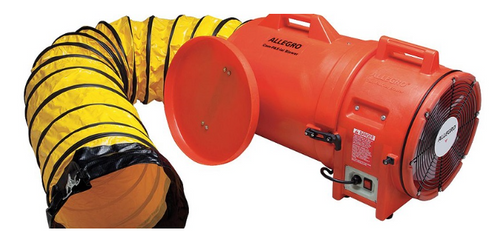Roles and Responsibilities for Permit-Required Confined Space Entrants
For safe entry of a permit-required confined space (PRCS), OSHA designates roles for key persons involved in the procedure. Workers trained in these responsibilities are the only ones who should be involved in these potentially hazardous tasks.
Workers' roles vary depending on the amount of training and experience they have working in confined spaces. The first role we will discuss is that of the Attendant. The duties described in OSHA standard 1910.146 require an Attendant to be stationed outside the PRCS and they may not enter for any reason. This includes simple tasks such as helping to bring in tools or equipment. They certainly are not allowed to perform rescue by entering the space and must not leave the area unless relieved by another trained Attendant.
As you might guess, the Attendant is there to monitor the situation and maintain communication with the workers. Serving as a critical link for those working inside the Attendant is able to monitor from a safe distance. Attendants are able to call for help if there is an accident and can perform non-entry rescue procedures such as winch rescue as long as they do not enter the space. This team member also has the authority to call for the immediate evacuation of the space if conditions either inside or outside of the confined space become hazardous.
The next role in the confined space entry team is that of Authorized Entrant. This worker has been trained to be aware of the hazards confined spaces can potentially contain. He or she is conscious of the responsibilities of each entry role of the confined space team as well as the controls, equipment and other requirements for safe entry.
The Authorized Entrant is trained not only on the Personal Protective Equipment (PPE) required for entry, but also to recognize the tell-tail signs of unsafe conditions. PRCS entry can be dangerous work, and the people trained for entry will know the kinds of hazards they are potentially facing and what actions to take in the event of emergency.
The final person in a confined space team is the Confined Space Supervisor. This is typically the person who knows the most about the confined spaces on a job site. The Supervisor has many duties including knowledge of the hazards: not only what hazards might be faced in the PRCS, but also signs and symptoms of exposure, and the likely consequences of that contact.
The Confined Space Supervisor must verify the entry by making sure the permit has been filled out correctly, that all equipment for entry, such as gas monitors, are in place, and that any tests required by the permit have been conducted. If these requirements are not met, the CS Supervisor is responsible for canceling the entry and permit, and re-issuing it when the conditions have been met.
It is also the responsibility of the Supervisor to make sure rescue services are ready to assist and that there is an easy way of contacting them should it become necessary.
Clearly all these roles aid in making confined space entry as safe as possible. Each team member has clearly-defined responsibilities and together they provide the greatest chance for safety in potentially hazardous environments of permit-required confined spaces.
Recent Posts
-
Promoting Safety: National Work Zone Awareness Week is April 15-19, 2024
Each year, the National Work Zone Awareness Week (NWZAW) places the spotlight on the importance o …Apr 11th 2024 -
Understanding 4 Gas Monitors: How They Work & Why They Are Important
In today’s increasingly dynamic industrial landscape, 4 gas monitors have emerged as critical com …Apr 8th 2024 -
April Showers Require Workers to Wear Hi-Vis Safety Rain Gear
While April showers bring May flowers, they also bring challenges, particularly for those working …Apr 1st 2024





